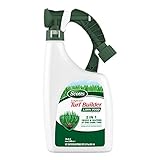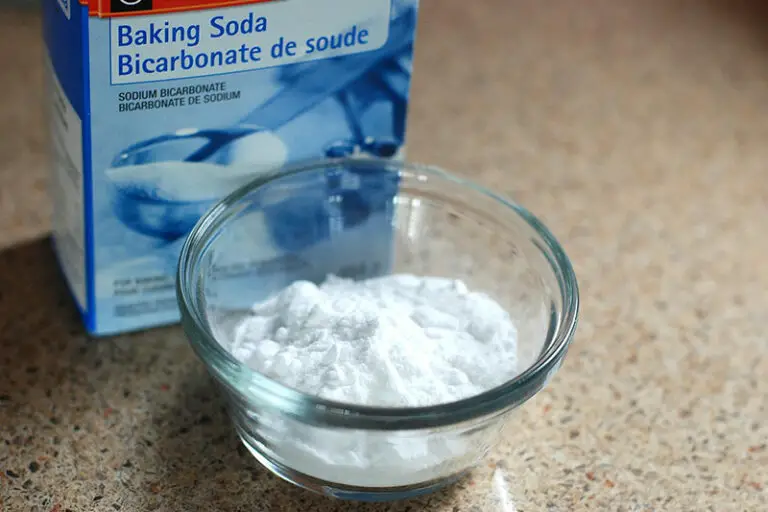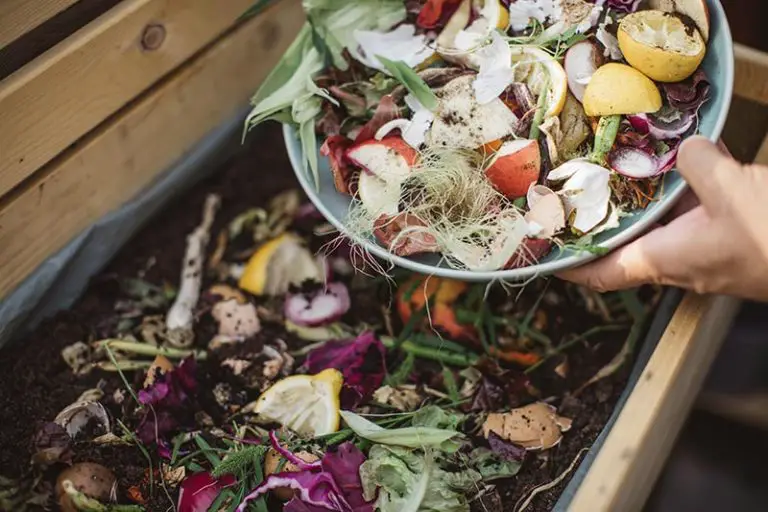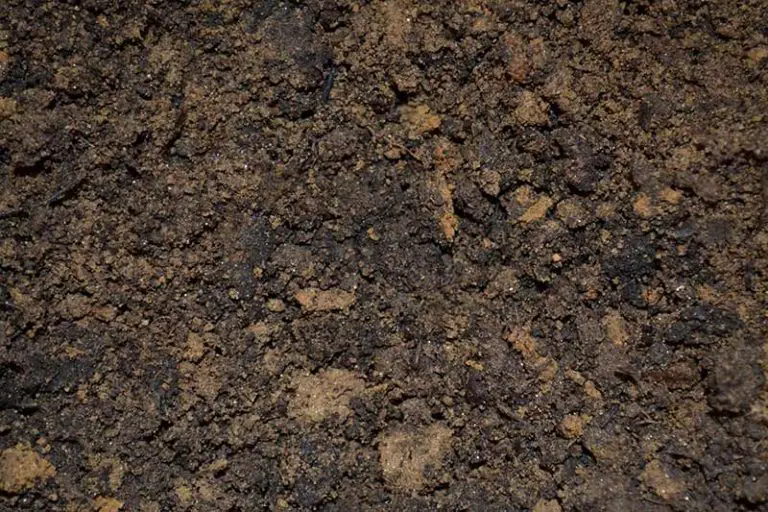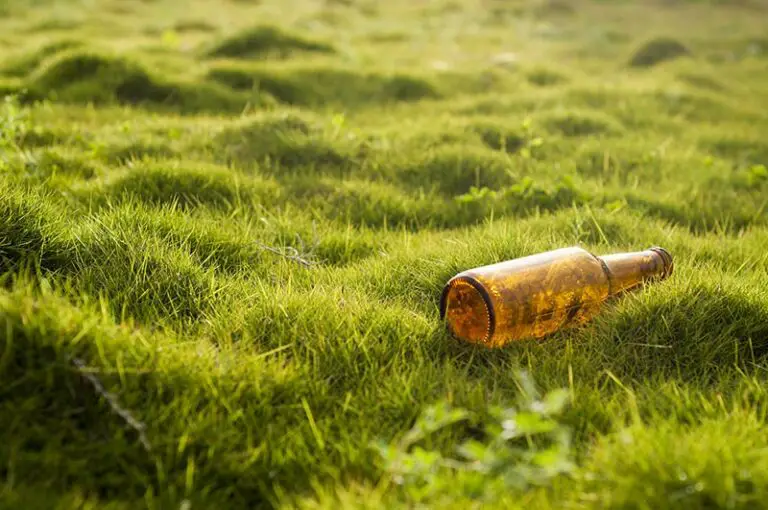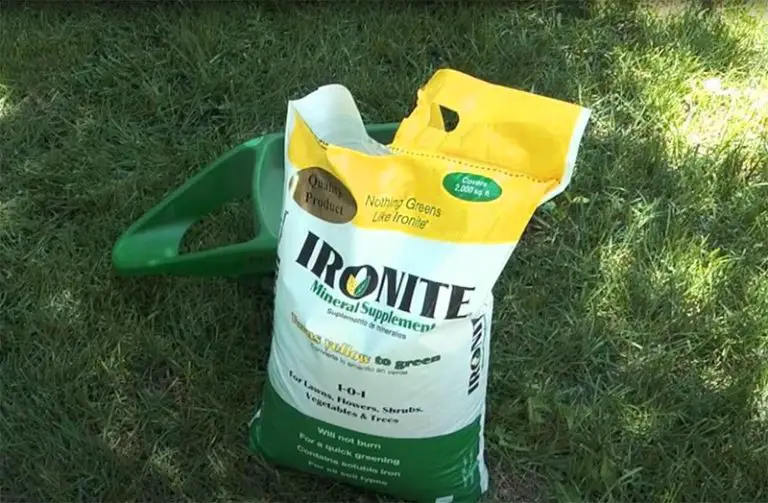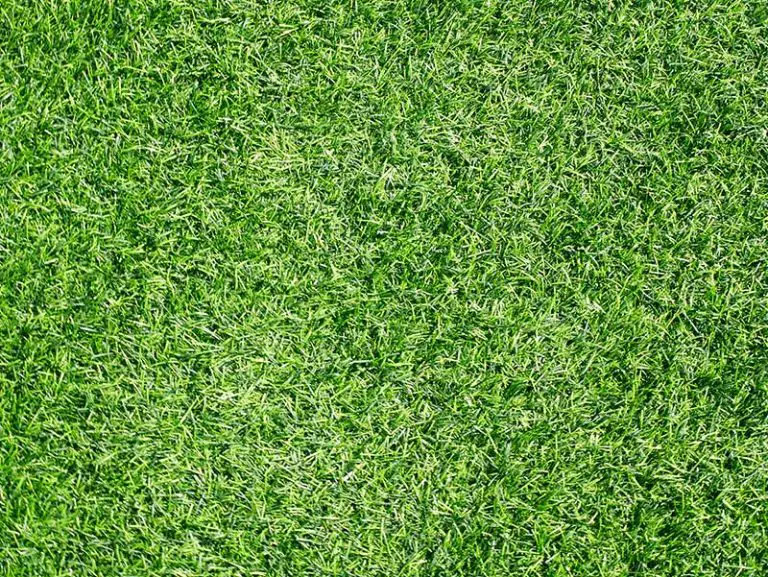When to Fertilize New Grass
Growing grass may seem like a simple and straightforward task, but there are so many more aspects to be considered beyond throwing down the grass seed and hoping for the best. Arguably the most important of these factors is fertilization, as without having the full range of essential nutrients available to them in the soil, your grass seedlings will struggle to grow into the lush, green lawn that you’re aiming for.
The key to getting your lawn right the first time is the diligent planning, maintenance, and after-care of the fertilization of your new grass seed. In this guide, we have gone through everything you need to know about fertilization, and when and how to fertilize new grass, to ensure you give your lawn the best chances of flourishing against the elements.
What is Fertilization and Why is it Important?
To understand the important role that fertilization plays in growing new grass, it helps to have a general idea of what fertilizer actually is and why it’s often necessary in any kind of gardening.
Like humans, plants have a number of different nutrients that are essential for their growth and health. Some are only needed in trace amounts, referred to as secondary nutrients and micronutrients, while there are others needed in relatively large amounts, which are known as primary nutrients. The primary nutrients needed by plants are specifically nitrogen (N), phosphorus (P), and potassium (K).
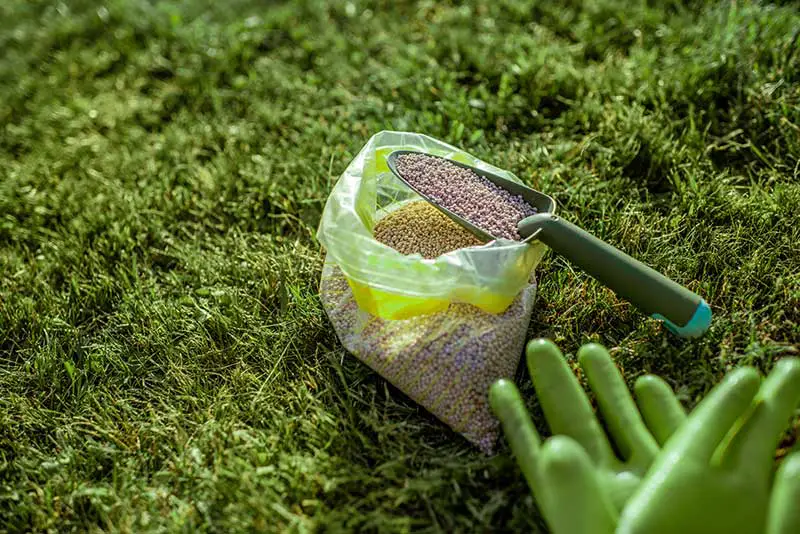
What Do Nitrogen, Phosphorus and Potassium Do for Grass?
For grass specifically, nitrogen, phosphorus and potassium perform these individual functions:
Nitrogen (N) makes grass thick, green and lush
Phosphorus (P) triggers grass seed expansion, root growth, and mineral consumption
Potassium (K) protects grass from drought, disease, and harsh winters
These nutrients must be abundant and readily available in the soil for plants to take them up, but unfortunately, it’s quite often the case that soils won’t naturally contain enough of one or all of them to provide the optimal conditions for plant growth.
This is where fertilizer comes into play – fertilizers are mixtures made up of these key nutrients which can be applied to soils that are in need of a nutritional boost. They can either be organic fertilizers, meaning they’re made from sources of the nutrients that are naturally occurring, or inorganic fertilizers, which are synthesized chemical mixtures of the same nutrients.
Why Fertilize New Grass?
For new grass, applying the right fertilizers at the right stages of growth can be the ‘make or break’ between growing a full green lawn that is resistant to inclement weather, versus having to go through the disappointment of watching your newly planted seeds become a yellow, patchy, or non-existent lawn. You could get everything else right, like testing your soil pH, preparing the soil, and choosing the perfect grass seed, but without proper fertilization, you will most likely end up with a mediocre-at-best lawn and will then have to start the process all over again next year.
Even if your new grass seedlings manage to grow in unfertilized soil, poor soil conditions can result in a host of other problems such as having more insects, more weeds, increased erosion and runoff, an increased risk of drought and burning, and a higher chance of fungal lawn diseases such as brown patch fungus or dollar spot. For this reason, it’s crucial to make sure your soil is sufficiently fertilized at every stage of the new grass process, continuing to monitor its state long after the grass seedlings have fully established.
Reasons to Fertilize New Grass
To speed up the growing process
The concentrated and immediately available boost of nutrients in fertilizers will speed up the growth process of your new lawn.
To prevent the risk of lawn diseases and grass growth issues
Using a high-quality fertilizer will make your soil and grass more resilient against brown patches, erosion, snow mold, red thread, and summer patching.
If your lawn lacks direct sun
Most lawns require four to six hours of direct sunlight in order to thrive, so fertilizer can be used if your lawn is inhibited from this.
If your lawn suffers from insufficient watering
Fertilizer can help if you aren’t able to water your lawn as often as necessary or if you lack an irrigation system.
What is the Best Fertilizer for New Grass?
All fertilizers are applied with the same goal in mind, to provide soil and plants with a boost of supplementary nutrients. However, the amounts of nutrients contained in each one varies from product to product. Some are loaded with the nutrients most needed in the early stages of grass seed germination, whereas others are designed to work best when the grass has already been established. It’s crucial to know what type of fertilizer you should be using at each stage of the process.
What does the NPK Ratio on Fertilizer Mean?
You can look at the labels of commercially bought fertilizers to find out how much of each primary nutrient it contains, which will help you determine which fertilizer your soil would benefit from the most. This is known as the ‘NPK Ratio’, as it tells you the amounts of nitrogen (N), phosphorus (P), and potassium (K) that are in the fertilizer and in what relative quantities that they’re present. To explain this with an example, a 100-pound bag of fertilizer that states it has a “10-10-10” NPK ratio on the label means that the levels of nitrogen, phosphorus, and potassium are present in an equal ratio of 10% to each other.
What’s the Difference Between Starter Fertilizer and Regular Fertilizer?
Whether you’re reviving an existing lawn or attempting to grow a completely new lawn from scratch, the first type of fertilizer you should apply is a starter fertilizer. While starter fertilizer and regular fertilizer both contain the nutrients needed by plants to grow, starter fertilizer is specially designed with a higher ratio of those most necessary in the early stages of germination.
Newly emerging grass seedlings need a higher level of readily available phosphorus and quick release nitrogen, and so starter fertilizer contains a higher concentration of these two nutrients. Grass that is well-established and past its early stages of growth doesn’t need phosphorus in the same way that young grass does, but instead thrives with the use of fertilizer that has nitrogen as its main ingredient.
You can look at the NPK ratios on the packaging of store-bought fertilizer to know which one has the best ratio of nutrients for your lawn’s current needs. In addition to the NPK values, there are some other factors that differentiate starter fertilizers from regular fertilizers. Refer to our handy table below to help you decide which one you should look into buying at this stage of your lawn.
| Regular Fertilizer | Starter Fertilizer | |
|---|---|---|
| Nutrients | Contains nitrogen, phosphorus and and potassium | Contains larger amounts of phosphorus (most critical ingredient for root growth of new grass seedlings) |
| Composition | Usually made up of a nitrogen-phosphorus-potassium ratio of 1-2-1 | Made up of 20% or more phosphorus |
| Effects | Mature plants benefit from varieties that are slow-release | Higher grade potassium with quick-release nitrogen increases plants’ uptake of potassium – this encourages growth and gives plants more access to nutrients |
| Application | Applied four to six inches apart from the base of mature plants | Applied by pouring a diluted cup of liquid fertilizer before laying seeds or plantings (dilution is necessary as some high-strength starter fertilizers can burn leaves, stems, and roots of young seedlings) |
When to Fertilize New Grass
Not only do you need to think about what type of fertilizer is best for each stage of growth, but you also need to factor in the time of year and the type of grass that you’re trying to grow. Grasses that thrive in the cooler seasons have slightly different fertilization requirements than those that grow in the warmer months, so you need to know what type of grass you’re planting and take note of the season you’re in before you can decide the best fertilization schedule for your lawn.
Fertilizing Cool-Season Grasses
Grasses that are classed as ‘cool-season grasses’, such as fescue, bluegrass, and ryegrass do best with one to two light feedings in the early fall, applying enough to promote healthy root growth but not so heavily that it promotes top growing. Mid-spring feeding helps to promote top growth and thicker foliage development. Never heavily fertilize in the summer or late spring, and avoid using a fast-acting fertilizer on a cool-season grass late in spring.
Fall feedings are ideal for cool-season grasses as they help the grass to store more carbohydrates, which helps it survive the harsh winter dormancy period and to come out growing strong in the spring.
Fertilizing Warm Season Grasses
Grasses that fall under the category of ‘warm-season grasses’, such as Bermudagrass, centipede grass and zoysia grass, do most of their growing in the late spring to early summer, so this is the time when they’ll need a boost of nutrients the most. A first application in early spring when the grass starts to green up and the threat of frost has passed will help the grass to start growing.
How to Fertilize New Grass
Stage 1: Preparing the Soil for Growth
Before you get to sowing your grass seed, you need to prep the planting area for fertilization to make sure the soil is in optimum condition to maximize the chances that your seedlings get off to a strong start. There are a few different activities you can do to prepare the soil, and which of these you have to do will depend on what stage of the growing process your lawn is at and the current conditions of your soil.
1. Test Your Soil to Find Out pH and Nutrient Levels
You can conduct a soil test to find out the current pH level of your soil, as well as how much of each nutrient is currently present and which nutrients it may be lacking. Straight-forward at-home pH testing kits, such as this 3-in-1 Soil Light/Moisture/pH Meter from Kensizer, are readily available to buy and provide some basic information on your soil. If you’re looking for a more in-depth analysis, you can take a sample of your soil and send it to a testing laboratory for a small fee.
- Moisture/pH Testers in One Set - Clear reading dashboard with arrow pointer, wide scale interval, and large number. Lightweight and portable, making it convenient for on-the-go testing.
- No Battery Required -- Save you from changing the battery, simply plug and play. Kindly note that DO NOT leave the meter in the soil for a long time, prevent it from corroding.
- Single Probe Detection -- Make it easier to insert into the soil and lessen damage to the probe and get you more accurate data quickly. If the soil is too dry the probe will not move, water it before testing. Otherwise, it is easy to damge the probe causes the product not work. And insert the probe into the soil about 2-4 inches.
- Regarding pH Value -- To get the relative pH value close to the absolute value, soil moisture should be between 4 and 7. the margin of error between relative and absolute PH value is around 1-2.
- Quality Assurance -- Any quality issues, please feel free to contact us. NOTE: DO NOT use it to test liquids.
Generally speaking, grasses tend to thrive in soil that is very slightly acidic, having a pH level around 6.5 to 7.0. An incorrect soil pH level will prevent the young grass seedlings from being able to take up nutrients even if they are abundantly present in the soil, and soil that is too acidic can affect its structural stability, cause fungal disease, or destroy any populations of beneficial organisms. If your soil test indicates that the soil is either higher or lower than this level, you may need to adjust your soil pH by adding acidifying or alkaline materials, but take care when adding these materials as you don’t want to end up having an extreme pH that’s worse than what you started with.
2. Aerate Soil
Foot traffic and poor drainage can cause areas of compacted soil in your lawn. Grass seeds and already-established grass trying to grow in hard dirt will struggle to take in air, water and nutrients through their roots, which prevents them from being as strong and healthy as possible. This problem can be solved by aerating the soil, which essentially is when you loosen the soil and air it out.
Aerating your lawn involves removing plugs of soil usually with a specialized aerating tool. It’s best to avoid poking holes into the soil as opposed to removing whole plugs, as this can actually make the compaction worse. By removing the plugs, you are creating holes throughout the soil that will allow more oxygen to reach the grass’ root system. This is beneficial for the many activities you can do after aeration, such as fertilizing. To improve drainage, you can brush sand into the holes, which also functions to create a seedbed for when you plant any new grass seed. As a side note, earthworms are excellent natural aerators, so you should take care of your lawn to encourage the presence of these helpful little organisms.
3. Topdress Soil with Compost
To improve the overall richness of your soil, you could apply a thin layer of compost to its surface, which brings a host of benefits to lawns at any stage of the growing process. Compost is a highly effective organic fertilizer that attracts microorganisms and provides them with shelter and nutrients, which in turn nurtures the environment. You can either make your own compost, or purchase it if you don’t have the time or resources to make it yourself – Blue Ribbon supplies bags of Organic Compost which can be used on your lawn to improve the condition of the soil and prepare it to support strong, healthy plants.
Topdress your soil by applying a thin layer of compost or the alternative organic fertilizer of your choice, and use a rake to spread it out evenly and work it into your lawn. As a tip, a heavier fertilizer, such as one that is made up of 60% compost and 40% sand, will be much easier to spread around than pure compost. You should opt for a more mature compost that is loose, dark and rich, has a fine texture, and is completely free of weeds. It’s best to avoid compost that contains large quantities of topsoil or peat moss, as these break down too slowly and will take too long to enrich the soil.
Stage 2: Applying a Starter Fertilizer
After preparing your soil, you have just one more stage of fertilization before you can start confidently spreading your grass seed, and that is the application of a starter fertilizer. As we’ve discussed already, starter fertilizer is a fertilizer that has been specially formulated to be used in the earliest stages of the growth process as it contains higher quantities of phosphorus, the nutrient most needed when seedlings are beginning to germinate. Once you have completed this stage, you won’t need to use starter fertilizer again, as it is only beneficial for the earliest part of grass seedling growth.
1. Purchase the Correct Starter Fertilizer
The first step is making sure that you pick up the right type of fertilizer, as regular fertilizer won’t contain the optimal quantities of nutrients to benefit your new grass seedlings at this stage of growth. Starter fertilizers formulated for growing grass are made up of different compositions of the primary nutrients needed by plants, nitrogen (N), phosphorus (P), and potassium (K).
The NPK value will be stated on the packaging, which tells you how much of each nutrient is present in that particular fertilizer. Common examples of the NPK value of starter fertilizers are 10-10-10, 20-10-10, and 16-8-8. Fertilizers with NPK values of 15-10-10 or 10-6-4 can also make sufficient starter fertilizers, as they too promote strong early growth and development of your new grass. Our favorite starter fertilizer is the Turf Builder Starter Food for New Grass from Scotts, as it can be used on all grass types to promote the growth of healthy roots and blades.
- Grows new grass 70% thicker, 35% quicker versus unfed grass
- Improves seeding results--also great for sod and grass plugs
- 24-25-4 fertilizer ratio provides the nutrients for developing lawns
- Safe for any grass type, whether you're planting new grass, starting a new lawn, or reseeding an existing one
- Covers 5,000 sq. ft
2. Till the Starter Fertilizer Into Planting Area
Use a fork or a deep spader to till the planting area, turning the soil over and breaking it up to loosen it. While you’re doing this, incorporate the starter fertilizer into the loosened soil to a maximum depth of four inches. Make sure not to work it too deeply into the soil, as this can burn the roots of your grass.
3. Level the Soil
After you have evenly incorporated the starter fertilizer throughout the planting area, level out the soil without making it too compact. Your lawn is now ready for you to start the seeding process.
Stage 3: Fertilizing the Established Grass
Once your grass seedlings have passed their initial stages of germination, you should continue to monitor and nurture the planting area with the use of normal fertilizer to maintain the growth of healthy, strong grass in your new lawn. The ideal time to start fertilizing your lawn is about four to six weeks after you have seen the first shoots sprout from the soil.
1. Purchase the Correct Fertilizer
Now your grass has established its roots and top growth, you should move on from starter fertilizer to regular fertilizer. Again, look to the NPK value stated on the packaging to understand the quantities of each primary nutrient that it contains. You may want to carry out another soil pH test at this point, as this will give you an indication of whether your soil is particularly low in any of these key nutrients, which can help you decide which fertilizer is going to best suit your lawn’s current needs.
There are a number of different types of fertilizer available, which can either be organically sourced or inorganic synthesized mixtures of either a liquid or granular consistency. Some will enrich the soil with nutrients that are able to be taken up by the grass instantly, while others are ‘slow release’, and will gradually and continuously supply the soil with nutrients over a longer period of time. You can also purchase fertilizers that simultaneously act as a weed killer, commonly referred to as ‘weed and feed’, in the case that there has been any weed growth between planting and the first round of fertilization.
2. Work Out the Quantity of Fertilizer to Be Applied
You should never just guess and blindly throw down fertilizer without first calculating the exact amount you need. Too little fertilizer means that you’ll be depriving the soil of the fertilizer’s full benefits, but too much fertilizer could end up burning your lawn, so this calculation is an important step to getting the quantity right and encouraging optimal growth of your new grass.
Before anything else, look at the label on the packaging of your chosen fertilizer. This will provide you with guidance on the quantity of fertilizer you should use, as well as preparation instructions for liquid fertilizers that need to be diluted before use. Next, you’ll need to work out the area of your lawn. Take measurements of the length and width of the planting area in the same units of measurement as those used in the fertilizer’s instructions, and then multiply those two measurements to find the total area squared. Use this figure along with the instructions on the packaging to figure out how much fertilizer you’re going to need.
3. Apply the Fertilizer to Your Lawn
Finally, spread the correct quantity of fertilizer evenly across your lawn. You can apply fertilizer by hand, but this may leave you with patches that are greener than others due to uneven distribution. Instead, use a hand-held spreader that’s on a setting that only lets out a small amount at a time. For larger planting areas, a fertilizer spreader on wheels is best, such as this walk-behind Turf Builder EdgeGuard DLX Broadcast Spreader manufactured by Scott’s.
Another tip to ensure the even application of your fertilizer is to apply half of it in one direction, then go over it applying the second half at a 90-degree angle to the first half.
Can You Over-Fertilize Grass?
Yes – as much as it’s important to fertilize grass at every stage of the growth process, it is possible to over-fertilize. This can cause just as many problems for your lawn and the surrounding environment as under-fertilization does.
Overzealous fertilization can result in the excessive amount of fertilizer leaching through the soil too quickly for it to be absorbed by the roots. The knock-on effect of this is that instead, the fertilizer ends up in the water table, clogging waterways with vegetative growth. Other unfortunate consequences of overfertilization include the need for excessive mowing and the causation of weak, overgrown turf that’s vulnerable to pests and thatch build-up.
Aside from anything else, over-fertilization can result in patchy, brown, and dead-looking grass, which is the complete opposite effect that you would want from fertilizing your lawn. This issue is known as fertilizer burn; if your lawn is looking yellow, over-fertilization may be the cause. Therefore, you should take extra care to apply just the right amount of fertilizer at the right times, without overloading your soil and creating more problems than you’re solving.
When planning your new lawn’s aftercare routine, it’s also crucial to know when to mow new grass for the first time.




